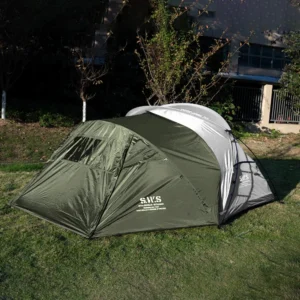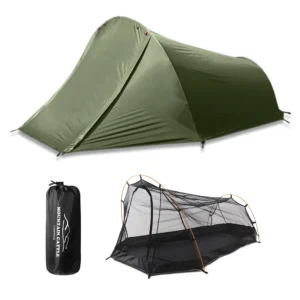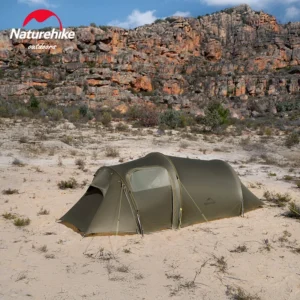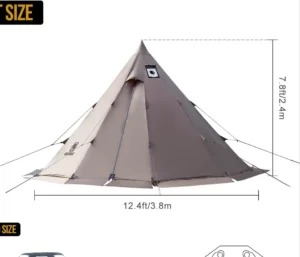Compact Backpacking Tent
Find your ideal trail home! Our compact backpacking tents shed weight and pack small, offering essential weather protection without weighing you down on your adventures.
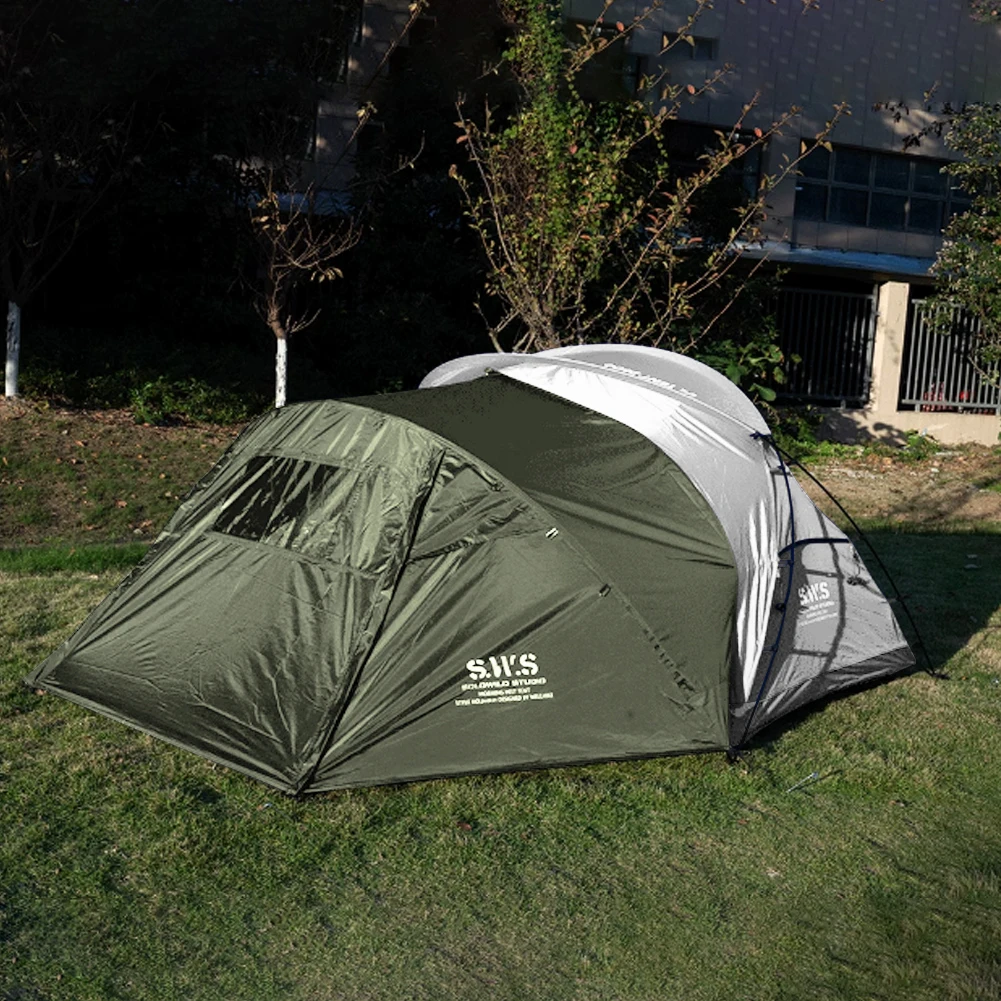
Showing all 4 results
Compact Backpacking Tent, Lightweight Backpacking Tent, Ultralight Backpacking Tent
$593.67 Select options This product has multiple variants. The options may be chosen on the product pageCompact Backpacking Tent, Lightweight Backpacking Tent, Waterproof Camping Tent
Price range: $105.08 through $192.44 Select options This product has multiple variants. The options may be chosen on the product pageCompact Backpacking Tent, Lightweight Backpacking Tent, Trekking Pole Backpacking Tent
Price range: $193.12 through $238.65 Select options This product has multiple variants. The options may be chosen on the product pageCompact Backpacking Tent, Lightweight Backpacking Tent, Waterproof Camping Tent
$335.52 Select options This product has multiple variants. The options may be chosen on the product page
Showing all 4 results
Finding the Perfect Balance: Weight vs. Space in Compact Tents
Understanding Packed Size Dimensions
When selecting a compact backpacking tent, understanding packed size is crucial for successful adventures. A truly “compact” tent typically measures between 12-18 inches (30-45 cm) in length and 4-6 inches (10-15 cm) in diameter when packed. These dimensions determine how easily your tent will fit inside or attach to your backpack.
Pole segment length significantly impacts overall packed size—shorter segments create a more compact package but might mean more connection points. Quality compression sacks can further reduce packed volume by 15-30%, making a substantial difference on the trail.
Consider these typical packed dimensions:
* Ultralight models: 12-14 inches × 4-5 inches (30-35 cm × 10-13 cm)
* Standard compact models: 14-18 inches × 5-6 inches (35-45 cm × 13-15 cm)
The relationship between packed size and backpack compatibility can’t be overstated—a well-chosen compact tent should occupy no more than 20-25% of your pack’s internal volume, leaving room for other essential gear.
Weight Categories Explained
Understanding weight categories helps balance carrying comfort with shelter needs:
| Category | Weight Range | Best For | Trade-offs |
|---|---|---|---|
| Ultralight | Under 2 lbs (0.9 kg) | Long-distance treks, minimalist hikers | Less durability, higher cost, less space |
| Lightweight | 2-3 lbs (0.9-1.4 kg) | Weekend to week-long trips, balance seekers | Moderate durability, reasonable space |
| Standard | 3-4 lbs (1.4-1.8 kg) | Shorter trips, durability priority | More weight, better long-term value |
“Minimum trail weight” refers to just the essential components (tent body, rainfly, poles) while “packaged weight” includes everything (stakes, guy lines, stuff sacks). The difference can be 4-8 ounces (115-225 g), which matters over long distances.
A single pound (0.45 kg) difference might seem minor, but over a 15-mile (24 km) day, that extra weight significantly impacts energy expenditure and hiking enjoyment.
Material Technology for Lightweight Performance
Modern compact tents utilize advanced materials to minimize weight while maximizing durability:
Silnylon (Silicone-impregnated nylon) – Offers excellent waterproofing at 15-30% lighter weight than traditional nylon. Typical denier: 10-20D.
Silpoly (Silicone-impregnated polyester) – Absorbs less water than silnylon (0.4% vs. 4%) and doesn’t stretch when wet. Maintains its shape in changing conditions.
Dyneema Composite Fabric (formerly Cuben Fiber) – Ultralight material that’s incredibly strong and 100% waterproof. Weighs 50-60% less than silnylon but costs significantly more.
Waterproofing is measured in hydrostatic head ratings—look for floor ratings of 2000-3000mm for reliable protection and fly ratings of 1200-1500mm minimum.
Pole materials dramatically impact weight and performance:
* Aluminum alloy (typically DAC): Balanced weight-to-strength ratio
* Carbon fiber: 30-40% lighter than aluminum but more brittle and expensive
The best material combinations create tents that hit the sweet spot between weight reduction and reliable trail performance.
Essential Features of Modern Compact Backpacking Tents
Weather Protection Systems
Despite their minimal weight, quality compact tents offer robust weather protection through:
- Rainfly coverage – Full-coverage flies extend to ground level for maximum protection, while partial flies save weight but offer less protection in driving rain
- Bathtub floor construction – Elevates seams 3-5 inches (7-12 cm) off the ground, preventing water ingress during heavy downpours
- Seam taping and waterproof coatings – Factory-sealed seams prevent leakage at stitch points
- Wind stability features – Low-profile designs, multiple guy-out points, and strategic pole placement maintain stability in gusts up to 30-40 mph (48-64 kph)
Most compact tents are designed for 3-season use (spring through fall), though some ultralight designs sacrifice some weather resistance for additional weight savings.
Space Optimization Design
Ingenious design elements maximize usable space in compact footprints:
- Pre-bent poles create more vertical walls, increasing usable interior volume by up to 20% compared to traditional dome designs
- Strategic vestibule designs add 5-10 square feet (0.5-0.9 m²) of protected storage space without increasing tent body size
- Optimized peak heights (typically 36-42 inches/91-107 cm) allow sitting up comfortably without excess fabric
- Tapered floor designs maintain width at shoulders (50-55 inches/127-140 cm) while reducing footprint at feet
These innovations ensure comfort doesn’t require additional ounces, creating living spaces that feel larger than their packed size suggests.
Selecting the Right Compact Backpacking Tent
Single vs. Double-Wall Construction
The construction style fundamentally affects performance and packability:
Single-Wall Tents:
* 15-30% lighter than comparable double-wall designs
* More compact packed size
* Faster setup (one piece vs. multiple)
* Prone to condensation in humid conditions
* Often less ventilation
Double-Wall Tents:
* Superior condensation management with separate breathable inner tent
* Better temperature regulation
* More versatile (can use just inner tent in dry, bug-heavy conditions)
* Additional weight and bulk
* More complex setup process
Your environment should guide this choice—dry climates favor single-wall designs while humid regions demand double-wall construction despite weight penalties.
Capacity Considerations for Solo and Partner Hiking
The right size balances comfort against weight and packed size:
A true 1-person compact tent typically offers 15-20 square feet (1.4-1.9 m²) of floor space—enough for one person and minimal gear inside. 2P designs provide 25-35 square feet (2.3-3.3 m²), accommodating two standard sleeping pads (20-25 inches/51-64 cm wide) with minimal overlap.
For solo hikers, a 2P tent adds 8-12 ounces (225-340 g) on average but provides valuable space for gear storage and movement. When shared between two hikers, a 2P tent actually reduces per-person weight while maintaining comfort.
Setup Styles: Freestanding vs. Non-Freestanding Structures
Setup style impacts both usability and packability:
Freestanding tents stand without stakes using self-supporting pole structures, offering:
* Setup virtually anywhere (rock, platforms, difficult soil)
* Easier repositioning after initial setup
* Typically faster learning curve
* Added pole weight (4-8 ounces/115-225 g)
Non-freestanding tents require stakes and/or trekking poles for structure, providing:
* Significant weight savings
* Often more compact packed size
* Greater stability in high winds when properly pitched
* More challenging setup requiring practice
Your camping environment and experience level should inform this choice.
Specialized Compact Tent Designs
Trekking Pole Tents: Maximizing Ultralight Potential
Trekking pole tents represent the ultimate weight-saving approach by eliminating dedicated poles—your hiking poles become your tent structure. This clever design:
- Reduces weight by 8-14 ounces (225-400 g)
- Decreases packed size by up to 30%
- Creates a more compact cylinder without rigid poles
- Requires adjustable trekking poles (typically 120-130 cm length)
These designs excel for through-hikers and ultralight enthusiasts but demand more setup expertise and aren’t practical for those who don’t already use trekking poles.
Final Selection Considerations
Are ultralight compact tents worth the premium price?
Ultralight compact tents typically cost 30-50% more than standard alternatives. Consider:
Worth the investment if:
* You hike frequently or cover significant distances
* You have multiple trips planned (cost per use decreases)
* Your knees, back or other joints benefit from reduced pack weight
* You value the improved hiking experience of carrying less
Potentially not worth it if:
* You camp infrequently (1-2 weekends per year)
* You typically hike short distances to campsites
* Your budget is limited and other gear needs updating
* You tend to be hard on equipment
At Explore Elements, we believe the best compact backpacking tent balances appropriate weight for your needs with reliability in the environments you explore. While ultralight options showcase impressive technology, the right tent for you maintains this critical balance without unnecessary compromise.


